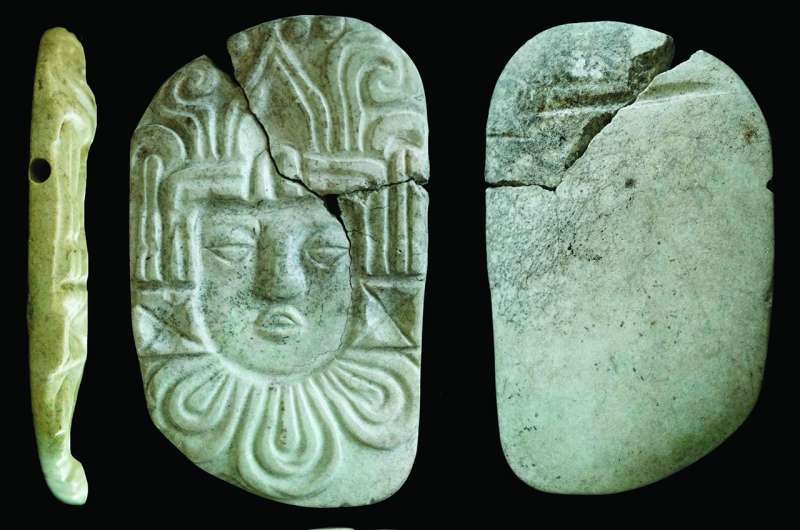This article has been reviewed according to Science X's editorial process and policies. Editors have highlighted the following attributes while ensuring the content's credibility:
fact-checked
peer-reviewed publication
trusted source
proofread
Dramatic burning of royal remains reveals Maya regime change

New archaeological investigations in Guatemala reveal that ancient Maya peoples did not just passively watch their dynastic systems collapse at the end of the Classic period. They actively reworked their political systems to create new governments.
Archaeologists have uncovered evidence of the ritual burning of royal human remains during the early ninth century AD at a pyramid in the Maya city of Ucanal, Guatemala, suggesting that the burning event was a public display of a political regime change.
Textual sources indicate that the beginning of the ninth century AD saw much political upheaval in the Maya Lowlands, but that the Maya kingdom of K'anwitznal grew in political power beginning with the reign of a new leader, Papmalil, who may have been a foreigner.
"Much epigraphic and archaeological research in the Maya area has focused on the collapse of Classic Maya polities at the end of the eighth and the beginning of the ninth century AD," states lead author of the research, Dr. Christina T. Halperin from the University of Montreal.
"However, key tipping points in history are rarely found directly in the archaeological record."
Nevertheless, Dr. Halperin and a team of researchers excavated a temple-pyramid at the K'anwitznal capital of Ucanal, discovering a deposit containing burnt human remains and ornaments. Their results are published in the journal Antiquity.
The objects in the deposit include many personal adornments made from valuable materials, such as a greenstone mask usually placed in royal tombs with the deceased ruler. This suggests that the burial was that of Maya royalty.
Radiocarbon dating indicates that the burning event occurred likely between AD 773–881, some time after the royal individuals died, suggesting that the tomb was re-entered specifically to burn the royal remains, which were then deposited in the construction of a new phase of a temple-pyramid.
The burning event was part of a political act that simultaneously rejected a Late Classic (ca. 600–810 CE) Maya dynasty and instantiated a new era of political order on the eve of the Terminal Classic period. This would have been a dramatic, publicly visible event that overlapped in time with Papmalil's takeover of the kingdom.
"The fire-burning event of the burial deposit was likely a dramatic public affair," says Dr. Halperin. "Because the fire-burning event itself had the potential to be highly ceremonial, public and charged with emotion, it could dramatically mark the dismantling of an ancient regime."
The ritual re-entering of tombs and burning of royal remains is known from Mayan hieroglyphic texts and has often been interpreted as an act of desecration. The ritual fire-burning event also corresponds temporally to the dismantling and re-use of elite buildings on a monumental scale at Ucanal.
"The fire-burning event itself and the reign of Papmalil helped usher in new forms of monumental imagery that emphasized horizontal political ties and fundamental changes in the social structure of society," states Dr. Halperin.
"In this sense, it was not just an end of an era, but a pivot point around which the K'anwitznal polity, and the Maya of the southern Lowlands in general, transformed themselves anew."
More information: Christina T. Halperin et al, A pivot point in Maya history: fire-burning event at K'anwitznal (Ucanal) and the making of a new era of political rule, Antiquity (2024). DOI: 10.15184/aqy.2024.38
Journal information: Antiquity
Provided by Antiquity





















